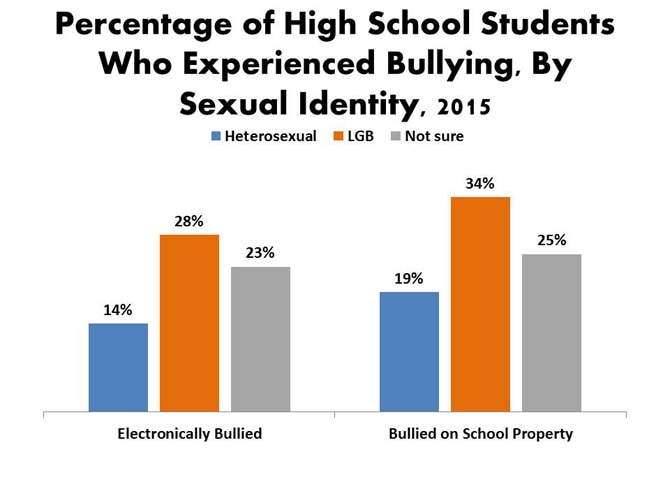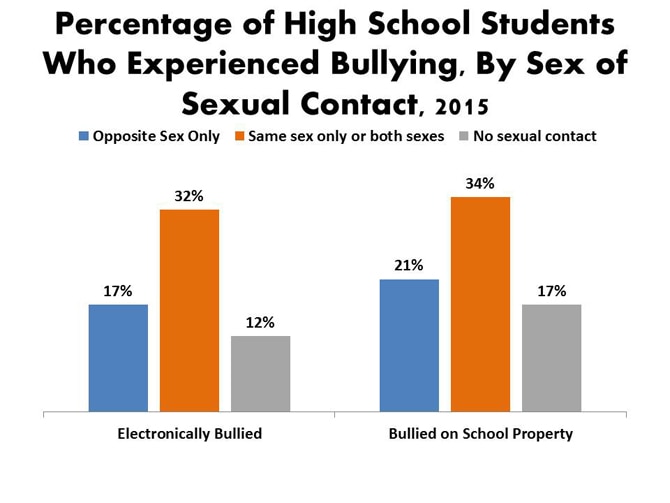Every other year, the Centers for Disease Control and Prevention (CDC) administers the national Youth Risk Behavior Survey (YRBS) in high schools across the U.S. In the 2015 survey, two items were included to capture sexual orientation - self-reported sexual identity and the sex of sexual contacts. The results, found here - PDF, provide current national estimates of the percentage of high school students who are gay, lesbian, and bisexual or are not sure of their sexual identity and the percentage of high school students who have had sexual contact with only the same sex or with both sexes. In addition, the publication provides estimates of many health-related behaviors by sexual identity and sex of sexual contacts.
Nationwide, 89% of high school students identified as heterosexual, 2% identified as gay or lesbian, 6% identified as bisexual, and 3% were not sure of their sexual identity. Approximately 19% and 14% of heterosexual students had been bullied on school property or electronically bullied, respectively, during the 12 months before the survey. Of those who identified as lesbian, gay, or bisexual (LGB) and not sure students, at least one-fourth had been bullied on school property (34% of LGB and 25% of not sure students) or electronically bullied (28% of LGB and 23% of not sure students) during the 12 months before the survey.

Nationwide, 48% of high school students had sexual contact with only the opposite sex, 2% had sexual contact with only the same sex, 5% had sexual contact with both sexes, and 46% had no sexual contact during their lives. Of the students who reported having sex with the same sex or both sexes, 34% experienced bullying on school property and 32% experiencing electronic bullying during the 12 months before the survey.

From these new national estimates, it is clear that bullying remains a widespread concern for sexual minority youth attending U.S. high schools. It is important for schools and communities to create a safe environment for all youth. So, what can we do about it?
- Build strong connections and keep the lines of communication open. Some LGB youth often feel rejected. It is important for them to know that their families, friends, schools, and communities support them.
- Establish a safe environment at school. Schools can send a message that no one should be treated differently because they are, or are perceived to be, LGB. Sexual orientation and gender identity protection can be added to school policies.
- Create gay-straight alliances (GSAs). GSAs help create safer schools. Schools must allow these groups if they have other “non-curricular” clubs or groups. Learn more about the right to form a GSA under the Equal Access Act.
- Train staff and volunteers in bullying prevention and intervention. Schools, clubs, camps, after school programs, summer programs, and other youth organizations can train staff and volunteers on bullying prevention and intervention.

